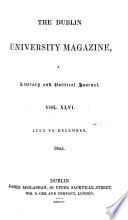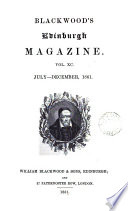 ... he thought, that the planets were kept in their orbits by gravitating towards the sun. Kepler had discovered the great law of the planetary motions, that the squares of their periodic times were as the cubes of their distances from the sun... ... he thought, that the planets were kept in their orbits by gravitating towards the sun. Kepler had discovered the great law of the planetary motions, that the squares of their periodic times were as the cubes of their distances from the sun...  Inventors at Work: With Chapters on Discovery - Page 380by George Iles - 1906 - 503 pagesFull view Inventors at Work: With Chapters on Discovery - Page 380by George Iles - 1906 - 503 pagesFull view - About this book
 | John Playfair - 1822 - 464 pages
...extended the third of * Hist, de I'Astron. Mod. Tom. 11. these laws to the satellites of Jupiter, showing that the squares of their periodic times were as the cubes of their distances from the centre of the body round which they revolved. The imaginary apparatus of cycles and epicycles,—the... | |
 | 1824 - 878 pages
...Cassini's observations had also extended the third of these^laws to the satellites of Jupiter, showing that the squares of their periodic times were as the cubes of their distances from the centre of the body round which they revolved. The imaginary apparatus of cycles and epicycles,—the... | |
 | 1824 - 844 pages
...Cassini's observations had also extended the third of these laws to the satellites of Jupiter, showing that the squares of their periodic times were as the cubes of their distances from the centre of the body round which they revolved. The imaginary apparatus of cycles and epicycles, —... | |
 | Alexander von Humboldt - 1849 - 424 pages
...recognised, that the secondary planets obeyed the laws discovered by Kepler; and it was now first observed that the squares of their periodic times were as the cubes of the mean distances of the satellites from the primary planets. It was this which led Kepler, in the... | |
 | David Brewster - 1855 - 504 pages
...attraction, it was equally probable, he thought, that the planets were kept in their orbits by gravitating towards the sun. \ Kepler had discovered the great...as the cubes of their distances from the sun, and hence\Wewton drew the important conclusion that the force of gravity or attraction, by which the planets... | |
 | University magazine - 1855 - 776 pages
...were kept in their orbits by gravitating towards the sun. Kepler had discovered the great law of tho planetary motions, that the squares of their periodic...their distances from the sun, and hence Newton drew tho important conclusion that the force of gravity or attraction, by whicli the planets were retained... | |
 | 1861 - 996 pages
...— it was eijiidlly probunle, he thought, that the planets were kept in their orhits iiy gravitatlug towards the sun. Kepler had discovered the great law...attraction, by which the planets were retained in their orhits, varied as the square of their distances from the sun."* The words we have printed in italics... | |
 | 1861 - 830 pages
...— it was equally jrrobable, he thought, that the planets were kept in their orbits by gravitating towards the sun. Kepler had discovered the great law...as the cubes of their distances from the sun; and hcntc Newton drew the important conclusion that the force of gravity, or attraction, by which the planets... | |
 | Adam Smith - 1869 - 498 pages
...and that of the Moon round the earth ; that each of them described equal areas in equal times, and that the squares of their periodic times were as the cubes of their distances. When these two last abstruse analogies, which, when Kepler at first observed them, were but little... | |
 | John Brinkley - 1871 - 344 pages
...times about the sun ; 2nd, that it moved in an ellipse of which the sun occupied the focus ; and, 3rd, that the squares of their periodic times were as the cubes of the greater axes of their orbits. Newton demonstrates by geometry that when the first takes place the... | |
| |